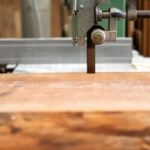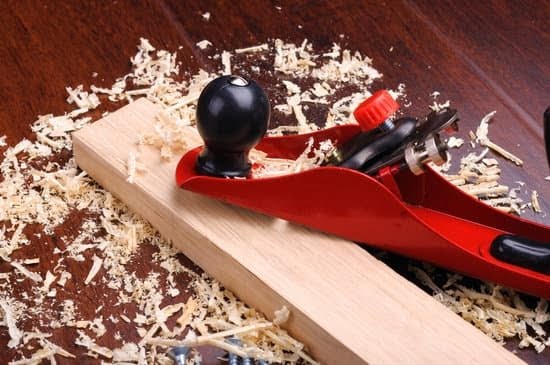Accurately measuring angles in woodworking is essential for achieving precise cuts and joints in your projects. Whether you are constructing furniture, framing a structure, or crafting intricate designs, understanding how to measure angles correctly can make all the difference in the final outcome. In this article, we will delve into the importance of mastering this skill and provide you with valuable insights on how to do so effectively.
Angles play a vital role in woodworking as they determine the shape, alignment, and stability of your pieces. Incorrect measurements can lead to misaligned cuts, uneven joints, and overall structural instability. To ensure that your woodworking projects turn out exactly as planned, it is crucial to have a solid grasp of how to measure angles accurately.
To begin your journey towards mastering the art of measuring angles in woodworking, it is important to familiarize yourself with the basic concepts and tools required for the task. From protractors to bevel gauges and combination squares, having the right instruments at your disposal is key to achieving precise measurements. In the following sections, we will explore these tools in detail and provide you with practical techniques for measuring angles effectively in your woodworking projects.
Understanding the Basics
In woodworking, angles play a crucial role in ensuring the accuracy and precision of your projects. Understanding what angles are and how to measure them correctly is essential for creating seamless joints, precise cuts, and well-crafted pieces. Whether you are working on a simple DIY project or a complex furniture piece, knowing how to measure angles accurately will help elevate the quality of your work.
To start with, it is important to grasp the concept of angles in woodworking. An angle is formed when two lines meet at a point, with the space between these lines determining the degree of the angle. In woodworking, angles are commonly measured in degrees and can range from acute (less than 90 degrees) to obtuse (more than 90 degrees). These angles dictate the shape and structure of your woodwork, influencing everything from joinery to aesthetics.
To measure angles in woodworking accurately, you will need essential tools that facilitate precision and reliability. Some of the must-have tools include:
- Protractor: A tool used to measure and draw precise angles.
- Bevel gauge: Ideal for transferring and replicating angles accurately onto your workpiece.
- Combination square: Useful for measuring both 45-degree and 90-degree angles efficiently.
Each of these tools serves a specific purpose in helping woodworkers achieve accurate angle measurements for their projects. It is vital to familiarize yourself with these tools and practice using them effectively for different tasks in woodworking. Now that you have an understanding of what angles are in woodworking and the necessary tools required let’s explore how to measure angles correctly using various techniques as outlined below.
Tools You’ll Need
When it comes to woodworking, accurate measurements are crucial for ensuring precise cuts and joints in your projects. One of the key aspects of woodworking that requires careful measurement is angles. Whether you are cutting miters for frames or creating bevels for table legs, getting the angles right is essential for a professional finish. In this section, we will discuss the essential tools you’ll need to accurately measure angles in woodworking.
To measure angles effectively in woodworking, you will need the right tools at your disposal. Here is a list of essential tools that every woodworker should have in their arsenal when working with angles:
- Protractor: A protractor is a simple yet versatile tool that allows you to measure and draw precise angles on your workpiece.
- Bevel Gauge: A bevel gauge is used to transfer and measure angles during layout and cutting operations, ensuring accurate results every time.
- Combination Square: A combination square combines a ruler and a square head, making it ideal for measuring and marking various angles with ease.
Knowing how to use these tools correctly is crucial for achieving accurate measurements in your woodworking projects. By mastering the use of a protractor, bevel gauge, and combination square, you can ensure that your cuts and joints fit together perfectly, resulting in professional-looking finished pieces.
In the next section, we will delve into different techniques for measuring angles in woodworking using these essential tools. By learning how to use them effectively, you can improve the precision of your cuts and create high-quality woodworking projects.
Techniques for Measuring Angles
Measuring angles accurately is crucial in woodworking to ensure precise cuts and joints for successful projects. There are several tools available to help woodworkers measure angles effectively. One of the most common tools used is a protractor, which allows for the measurement of angles ranging from 0 to 180 degrees.
Bevel gauges are also essential for measuring and transferring angles, especially when working with complex or irregular shapes. Additionally, digital angle finders provide a high level of accuracy in measuring angles quickly and efficiently.
When using a protractor to measure angles in woodworking, ensure that it is securely placed on the workpiece and aligned correctly with the edge you are measuring. Make sure to read the measurement carefully to avoid any errors in cutting or fitting pieces together.
A bevel gauge is ideal for transferring an angle from one piece to another by adjusting its blade to match the desired angle accurately. Digital angle finders offer precise measurements by displaying the exact angle digitally, making them easy to read and use for woodworking projects requiring accuracy.
| Tool | Key Features |
|---|---|
| Protractor | Measures angles from 0 – 180 degrees |
| Bevel Gauge | Allows for transferring angles accurately |
| Digital Angle Finder | Provides precise digital readings for accurate measurements |
Common Mistakes to Avoid
When it comes to woodworking, accurate measurements are key to achieving precise cuts and joints. However, measuring angles can be tricky, especially for beginners. In this section, we will discuss some of the common mistakes woodworkers make when measuring angles and provide tips on how to avoid them to ensure your projects turn out perfectly.
Using the Wrong Tools
One of the most common mistakes when measuring angles in woodworking is using the wrong tools. While a protractor may work for basic measurements, more complex angles require specialized tools such as a bevel gauge or combination square. Investing in the right tools for the job can make a significant difference in the accuracy of your measurements.
Incorrect Placement of Tools
Another mistake woodworkers often make is placing their measuring tools incorrectly on the workpiece. This can result in inaccurate measurements and ultimately affect the outcome of your project. When using a bevel gauge or protractor, make sure it is securely against the edge of the workpiece and aligned properly before taking any measurements.
Not Accounting for Saw Blade Width
A common error that can lead to imprecise cuts is failing to account for the width of your saw blade when measuring angles. If you overlook this crucial detail, your cuts may not align as intended, resulting in gaps or misaligned joints. To avoid this mistake, always factor in the width of your saw blade when measuring angles and adjust your cuts accordingly.
By being mindful of these common mistakes and following our tips on how to measure angles in woodworking accurately, you can ensure that your projects are executed with precision and attention to detail. Remember that practice makes perfect, so don’t be discouraged if you encounter challenges along the way. With patience and perseverance, mastering the skill of angle measurement will greatly enhance your woodworking abilities and take your projects to the next level.
Practical Examples
Woodworking requires precision and accuracy, especially when it comes to measuring angles for various tasks like cutting miters and bevels. To ensure the success of your woodworking projects, it is essential to know how to measure angles correctly. One of the most common tools used for this purpose is a protractor, which helps in determining the exact angle for making accurate cuts.
When measuring angles for cutting miters, start by placing the protractor against the edge of the material you are working with. Line up the zero-degree mark of the protractor with one edge of the material and then read off the desired angle on the scale. This method allows you to determine how much you need to adjust your saw blade to achieve the perfect miter cut for joining two pieces of wood together seamlessly.
Similarly, when measuring angles for cutting bevels, a combination square can come in handy. Simply place one end of the square against the edge of your workpiece and pivot it until the desired angle aligns with the blade or pencil mark. This technique ensures that you can accurately transfer angles onto your workpieces before making precise cuts using a table saw or miter saw.
| Measuring Angle Tool | Woodworking Technique |
|---|---|
| Protractor | Cutting Miters |
| Combination Square | Cutting Bevels |
Mastering how to measure angles in woodworking not only improves the quality of your projects but also saves time and materials by minimizing errors. Whether you are a beginner or experienced woodworker, practicing these step-by-step instructions for different woodworking tasks will enhance your skills and lead to more professional results. Remember to double-check your measurements before cutting any wood pieces to ensure that your angles are accurate and precise throughout your project.
Tips for Accurate Measurements
Use the Right Tools
To ensure accurate measurements when measuring angles in woodworking projects, it is crucial to use the right tools. Invest in a high-quality protractor, bevel gauge, and combination square to achieve precise results. These tools are essential for measuring and setting angles correctly, allowing you to make accurate cuts and joints.
Check Your Work Surface
Before measuring angles, make sure that your work surface is flat and level. Even a slight tilt or uneven surface can affect the accuracy of your measurements. Use a spirit level to check if your work area is stable before proceeding with any angle measurements. This simple step can significantly improve the precision of your woodworking projects.
Double-Check Your Measurements
When measuring angles in woodworking, always double-check your measurements to avoid errors. Take the time to verify the angle multiple times using different methods or tools. This extra precaution can help you catch any mistakes before making cuts or joints, ensuring that your project turns out as intended. Remember, accuracy is key in woodworking, so don’t rush through the measuring process.
Conclusion
In conclusion, mastering the skill of measuring angles in woodworking is essential for achieving precise cuts and joints in your projects. As highlighted throughout this article, accurate measurements are crucial for ensuring the structural integrity and aesthetics of your woodwork. By understanding the basics of angles, having the right tools at your disposal, and employing proper techniques for measuring angles, you can elevate the quality of your woodworking projects.
One key takeaway from this discussion is the importance of using tools like a protractor, bevel gauge, and combination square to accurately measure angles. These tools not only facilitate precise measurements but also help in avoiding common mistakes that could lead to inaccuracies in your cuts. Additionally, incorporating techniques such as using a digital angle finder can further enhance your ability to measure angles effectively in woodworking.
By applying the tips and tricks provided in this article and practicing different methods for measuring angles in woodworking tasks like cutting miters and bevels, you can sharpen your skills over time. Remember that attention to detail and patience are key when it comes to achieving accuracy in woodworking. So next time you embark on a woodworking project, ensure that you prioritize mastering how to measure angles – it will make all the difference in the end result of your creations.
Frequently Asked Questions
What Tool Is Used to Measure Angles in Woodworking?
A tool commonly used to measure angles in woodworking is a protractor. Protractors are handy devices that help woodworkers accurately determine the angle between two intersecting lines or surfaces, allowing for precise cuts and joinery.
What Is the Best Way to Measure an Angle?
The best way to measure an angle depends on the tools available and the level of precision required. One common method is using a digital angle finder, which provides accurate measurements quickly and easily. Another effective way is utilizing a combination square, which can be adjusted to various angles.
How Do You Saw Angles on Wood?
Sawing angles on wood requires careful calculation and marking beforehand. One method is by using a miter saw, which allows for precise cuts at specific angles with ease. Alternatively, a table saw with an adjustable blade angle can also be used for cutting angles in wood accurately and efficiently.

Hi everyone! I’m a woodworker and blogger, and this is my woodworking blog. In my blog, I share tips and tricks for woodworkers of all skill levels, as well as project ideas that you can try yourself.





